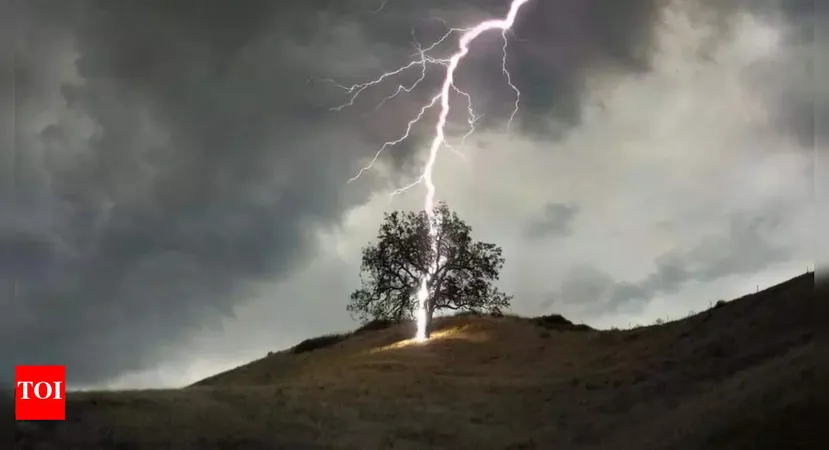
Lightning: The Silent Killer of 320 Million Trees Annually—And It’s Getting Worse!
2025-07-25
Author: Wei
A Shocking Reality: The Scale of Tree Deaths from Lightning
Every year, lightning strikes down a staggering 320 million trees worldwide. Unlike the dramatic scenes of wildfires, these tree fatalities often go unnoticed, but their consequences are catastrophic, spewing carbon emissions nearly on par with those from raging wildfires. The Amazon and Congo Basin are critical areas facing this hidden threat, while climate change is ramping up lightning activity, endangering forests across Canada, Russia, and the U.S.
How Lightning Stealthily Destroys Forests
Most people think of lightning as a quick flash followed by a boom, but in forests, it acts like a stealthy assassin. When lightning strikes, the damage isn't always visible. The heat can supercharge sap, causing internal explosions that lead to a slow, agonizing death for the tree. In dense jungles and woodlands, these silent slaughters often escape both human observation and satellite detection. Thanks to groundbreaking research from the Technical University of Munich, we now have a comprehensive model that quantifies this devastation, revealing just how underestimated lightning’s impact has been on our forests.
The Carbon Emissions Dilemma: Lightning’s Contribution
When trees die, they decompose, releasing carbon dioxide back into the atmosphere. Shockingly, the study found that lightning-related tree deaths emit between 0.77 and 1.09 billion tons of CO₂ annually, nearly rivaling the 1.26 billion tons released by wildfires. Given that total wildfire emissions can soar to around 5.85 billion tons (when accounting for deadwood and soil carbon), lightning is proving to be a clandestine giant contributor to global carbon emissions.
The Climate Crisis: A Perfect Storm for Lightning
As climate change escalates, experts anticipate an increase in lightning strikes, putting both tropical and temperate forests at grave risk. These forests, already weakened by droughts and pests, may struggle to recover, as trees in colder climates grow at a slower pace. The shifting dynamics may permanently transform forest ecosystems that have never faced such levels of lightning activity.
A Warning Sign We Can’t Ignore: The Ecological Impact of Tree Loss
The loss of 320 million trees equates to around 8,000 square kilometers of forest—larger than Sikkim and nearly ten times the size of New York City. These silent casualties severely affect biodiversity and climate stability, making it imperative to rethink how we monitor and manage our forests. As the planet continues to warm and lightning becomes more frequent, this critical issue is on the verge of exploding, turning our vital forests into silent victims of an invisible force.



 Brasil (PT)
Brasil (PT)
 Canada (EN)
Canada (EN)
 Chile (ES)
Chile (ES)
 Česko (CS)
Česko (CS)
 대한민국 (KO)
대한민국 (KO)
 España (ES)
España (ES)
 France (FR)
France (FR)
 Hong Kong (EN)
Hong Kong (EN)
 Italia (IT)
Italia (IT)
 日本 (JA)
日本 (JA)
 Magyarország (HU)
Magyarország (HU)
 Norge (NO)
Norge (NO)
 Polska (PL)
Polska (PL)
 Schweiz (DE)
Schweiz (DE)
 Singapore (EN)
Singapore (EN)
 Sverige (SV)
Sverige (SV)
 Suomi (FI)
Suomi (FI)
 Türkiye (TR)
Türkiye (TR)
 الإمارات العربية المتحدة (AR)
الإمارات العربية المتحدة (AR)